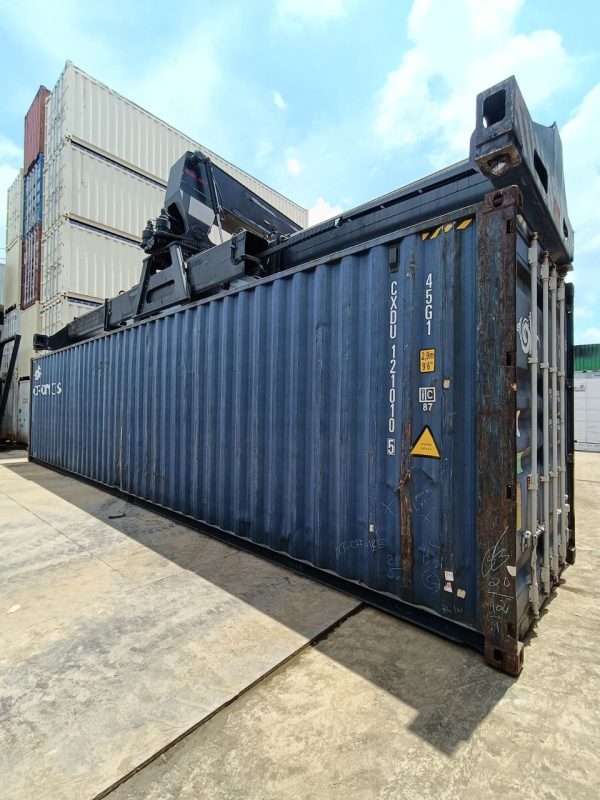The Pros and Cons of Building with Shipping Containers: What You Need to Know

In recent years, shipping container homes have surged in popularity as an alternative to traditional housing. This innovative approach to construction offers a range of benefits but also comes with its own set of challenges. If you’re considering building with shipping containers, it’s important to weigh the pros and cons to determine if this unique construction method is right for you.
The Pros of Building with Shipping Containers
- Cost-Effectiveness
One of the most appealing aspects of shipping container homes is their potential cost savings. Containers are often available at a fraction of the cost of traditional building materials. Reusing containers can be particularly economical, as they are often repurposed from international shipping and can be purchased at a relatively low price. Additionally, because containers are pre-fabricated, the construction process can be faster, potentially saving on labor costs.
- Sustainability and Eco-Friendliness
Building with shipping containers is an environmentally friendly option. Containers are made from steel, which is highly durable and recyclable. Repurposing these containers for housing helps reduce waste and minimizes the need for new building materials. The use of shipping containers can also lead to energy-efficient homes if proper insulation and energy systems are integrated, further contributing to their eco-friendly profile.
- Durability and Strength
Shipping containers are designed to withstand harsh conditions at sea, making them incredibly strong and durable. Their steel construction is resistant to many of the common issues that affect traditional homes, such as termites, mold, and rot. This durability translates to a long-lasting structure that can endure a variety of environmental challenges.
- Flexibility and Customization
Containers offer a high degree of flexibility in design and customization. They can be combined and modified to create a wide range of layouts and sizes. Whether you’re looking for a compact, minimalist home or a more complex multi-container structure, the modular nature of shipping containers allows for a high degree of creativity in design. Additionally, containers can be stacked and arranged in numerous configurations, making them suitable for both residential and commercial applications.
- Mobility
One of the unique advantages of shipping container homes is their inherent mobility. If you ever need to relocate, a container home can be transported to a new location. This mobility makes containers an attractive option for temporary housing, vacation homes, or even mobile offices.
The Cons of Building with Shipping Containers
- Insulation and Climate Control
While shipping containers are durable, they are not naturally well-insulated. Metal containers can become extremely hot in the summer and very cold in the winter. Proper insulation is crucial to ensure that the interior remains comfortable year-round. This added insulation can increase costs and requires careful planning to ensure energy efficiency.
- Limited Space
Shipping containers have a fixed size, which can limit the available space for living or working. While containers can be combined to create larger spaces, each individual container is relatively small, which can pose challenges for interior design and layout. This limitation can be a significant drawback if you’re looking for a spacious or open-plan design.
- Building Codes and Zoning Regulations
Shipping container homes may face scrutiny from local building codes and zoning regulations. Some areas have strict requirements for construction materials and methods, which can make it challenging to obtain permits for container-based structures. It’s essential to research and comply with local regulations to ensure that your project meets all necessary standards.
- Potential for Rust and Corrosion
Steel containers are prone to rust and corrosion, especially if they are exposed to moisture or salt. This can be a significant issue in coastal areas or places with high humidity. Proper sealing and maintenance are required to prevent rust from compromising the structural integrity of the container.
- Aesthetic and Perception Issues
While some people find the industrial look of shipping containers appealing, others may not appreciate their appearance. The aesthetic of container homes can be polarizing, and there may be resistance from neighbors or communities accustomed to traditional housing styles. Additionally, the initial investment in transforming a container into a livable space can be significant, which may affect the overall perception of value.
Conclusion
Building with shipping containers offers a unique and cost-effective approach to construction, with benefits ranging from sustainability to durability. However, it also comes with challenges, including insulation issues, limited space, and potential regulatory hurdles. By carefully considering these factors and planning accordingly, you can determine whether a shipping container home is the right choice for your needs and preferences.

